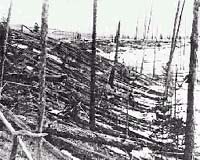Trump and Cyber Security: Did He Make Us Safer From Russia?
U.S. Cyber Warfare Strategy Reassessed: The Risks of Ending Offensive Operations Against Russia

Introduction: A Cybersecurity Gamble or a Diplomatic Reset?
Imagine a world where cyber warfare is not just the premise of a Bond movie or an episode of Mission Impossible, but a tangible and strategic tool in global power struggles. For the past quarter-century, cyber warfare has been a key piece on the geopolitical chessboard, with nations engaging in a digital cold war—where security agencies and military forces participate in a cyber equivalent of Mutually Assured Destruction (GovInfoSecurity). From hoarding zero-day vulnerabilities to engineering precision-targeted malware like Stuxnet, offensive cyber operations have shaped modern defence strategies (Loyola University Chicago).
Now, in a significant shift, the incoming Trump administration has announced a halt to offensive cyber operations against Russia, redirecting its focus toward China and Iran—noticeably omitting North Korea (BBC News). This recalibration has sparked concerns over its long-term implications, including the cessation of military aid to Ukraine, disruptions in intelligence sharing, and the broader impact on global cybersecurity stability. Is this a calculated move towards diplomatic realignment, or does it create a strategic void that adversaries could exploit? This article critically examines the motivations behind the policy shift, its potential repercussions, and its implications within the frameworks of international relations, cybersecurity strategy, and global power dynamics.
Russian Cyber Warfare: A Persistent and Evolving Threat
1.1 Russia’s Strategic Cyber Playbook
Russia has seamlessly integrated cyber warfare into its broader military and intelligence strategy, leveraging it as an instrument of power projection. Their approach is built on three key pillars:
- Persistent Engagement: Russian cyber doctrine emphasises continuous infiltration of adversary networks to gather intelligence and disrupt critical infrastructure (Huskaj, 2023).
- Hybrid Warfare: Cyber operations are often combined with traditional military tactics, as seen in Ukraine and Georgia (Chichulin & Kopylov, 2024).
- Psychological and Political Manipulation: The use of cyber disinformation campaigns has been instrumental in shaping political narratives globally (Rashid, Khan, & Azim, 2021).
1.2 Case Studies: The Russian Cyber Playbook in Action
Several high-profile attacks illustrate the sophistication of Russian cyber operations:
- The SolarWinds Compromise (2020-2021): This breach, attributed to Russian intelligence, infiltrated multiple U.S. government agencies and Fortune 500 companies, highlighting vulnerabilities in software supply chains (Vaughan-Nichols, 2021).
- Ukraine’s Power Grid Attacks (2015-2017): Russian hackers used malware such as BlackEnergy and Industroyer to disrupt Ukraine’s energy infrastructure, showcasing the potential for cyber-induced kinetic effects (Guchua & Zedelashvili, 2023).
- Election Interference (2016 & 2020): Russian hacking groups Fancy Bear and Cozy Bear engaged in data breaches and disinformation campaigns, altering political dynamics in multiple democracies (Jamieson, 2018).
These attacks exemplify how cyber warfare has been weaponised as a tool of statecraft, reinforcing Russia’s broader geopolitical ambitions.
The Trump Administration’s Pivot: From Russia to China and Iran
2.1 Reframing the Cyber Threat Landscape
The administration’s new strategy became evident when Liesyl Franz, the U.S. Deputy Assistant Secretary for International Cybersecurity, conspicuously omitted Russia from a key United Nations briefing on cyber threats, instead highlighting concerns about China and Iran (The Guardian, 2025). This omission marked a clear departure from previous policies that identified Russian cyber operations as a primary national security threat.
Similarly, the Cybersecurity and Infrastructure Security Agency (CISA) has internally shifted resources toward countering Chinese cyber espionage and Iranian state-sponsored cyberattacks, despite ongoing threats from Russian groups (CNN, 2025). This strategic reprioritisation raises questions about the nature of cyber threats and whether the U.S. may be underestimating the persistent risk posed by Russian cyber actors.
2.2 The Suspension of Offensive Cyber Operations
Perhaps the most controversial decision in this policy shift is U.S. Defence Secretary Pete Hegseth’s directive to halt all offensive cyber operations against Russia (ABC News).
3. Policy Implications: Weighing the Perspectives
3.1 Statement of Facts
The decision to halt offensive cyber operations against Russia represents a significant shift in U.S. cybersecurity policy. The official rationale behind the move is a strategic pivot towards addressing cyber threats from China and Iran while reassessing the cyber engagement framework with Russia.
3.2 Perceived Detrimental Effects
Critics argue that reducing cyber engagement with Russia may embolden its intelligence agencies and cybercrime syndicates. The Cold War’s history demonstrates that strategic de-escalation, when perceived as a sign of weakness, can lead to increased adversarial aggression. For instance, the 1979 Soviet invasion of Afghanistan followed a period of perceived Western détente (GovInfoSecurity). Similarly, experts warn that easing cyber pressure on Russia may enable it to intensify hybrid warfare tactics, including disinformation campaigns and cyber-espionage.
3.3 Perceived Advantages
Proponents of the policy compare it to Boris Yeltsin’s 1994 decision to detarget Russian nuclear missiles from U.S. cities, which symbolised de-escalation without dismantlement (Greensboro News & Record). Advocates argue that this temporary halt on cyber operations against Russia could lay the groundwork for cyber diplomacy and agreements similar to Cold War-era arms control treaties, reducing the risk of uncontrolled cyber escalation.
3.4 Overall Analysis
The Trump administration’s policy shift represents a calculated risk. While it opens potential diplomatic pathways, it also carries inherent risks of creating a security vacuum. Drawing lessons from Cold War diplomacy, effective deterrence must balance engagement with strategic restraint. Whether this policy fosters improved international cyber norms or leads to unintended escalation will depend on future geopolitical developments and Russia’s response.
References & Further Reading
- ABC News (2025) Hegseth orders suspension of Pentagon’s offensive cyber operations against Russia. Available at: https://abcnews.go.com/Politics/wireStory/hegseth-orders-suspension-pentagons-offensive-cyberoperations-russia-119408032 (Accessed: 3 March 2025).
- BBC News (2025) Understanding the U.S. cyber policy shift. Available at: https://www.bbc.com/news/articles/c2er34w0jgdo (Accessed: 4 March 2025).
- Chichulin, N.A. and Kopylov, A.V. (2024) ‘The impact of cyber warfare on national security’, Society: Politics, Economics, Law, 11(1), pp. 20–26. Available at: http://dx.doi.org/10.24158/pep.2024.11.2 (Accessed: 5 March 2025).
- GovInfoSecurity (2025) Cyber Cold War: U.S. vs Russia. Available at: https://www.govinfosecurity.com/blogs/cyber-cold-war-us-vs-russia-p-227 (Accessed: 2 March 2025).
- Huskaj, G. (2023) Offensive cyberspace operations for cyber security. Available at: http://dx.doi.org/10.34190/iccws.18.1.1054 (Accessed: 1 March 2025).
- Loyola University Chicago (2025) Cyber conflicts and international law. Available at: https://lawecommons.luc.edu/cgi/viewcontent.cgi?article=1214&context=pilr (Accessed: 6 March 2025).
- Politico (2025) France has trouble understanding U.S. halt on cyber operations against Russia. Available at: https://www.politico.eu/article/france-has-trouble-understanding-us-halt-on-cyber-operations-against-russia/ (Accessed: 3 March 2025).
- Rashid, A., Khan, A.Y., and Azim, S.W. (2021) ‘Cyber hegemony and information warfare: A case of Russia’, Liberal Arts and Social Sciences International Journal (LASSIJ), 5(1), pp. [insert page numbers]. Available at: http://dx.doi.org/10.47264/idea.lassij/5.1.42 (Accessed: 5 March 2025).
- Vaughan-Nichols, S.J. (2021) SolarWinds: The more we learn, the worse it looks. ZDNet. Available at: https://www.zdnet.com/article/solarwinds-the-more-we-learn-the-worse-it-looks/ (Accessed: 2 March 2025).



